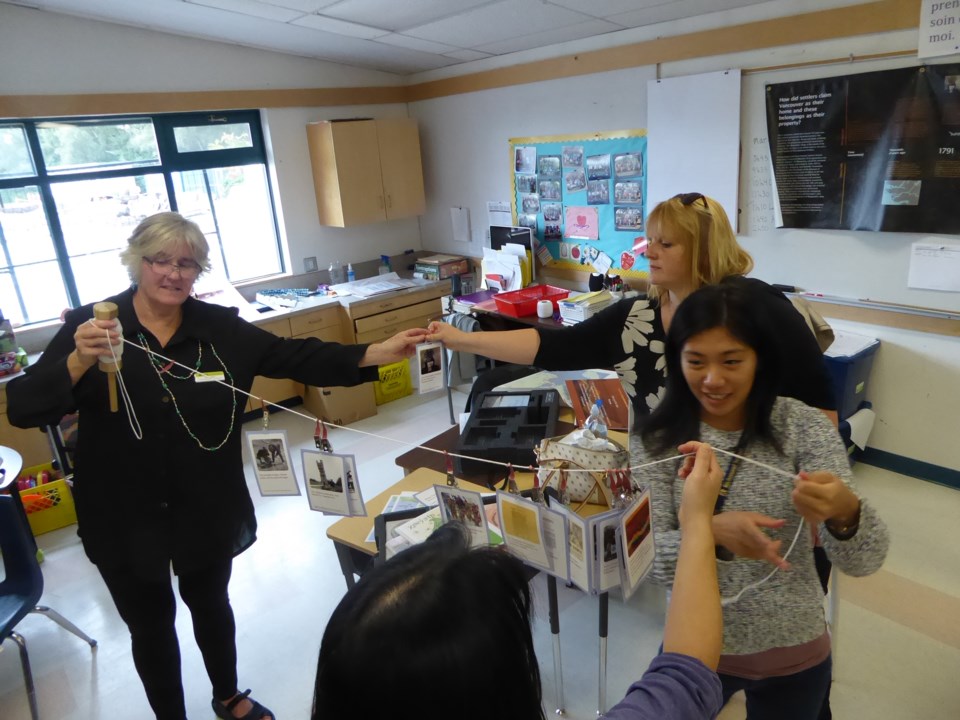When the Vancouver Museum of Anthropology unveiled its exhibit The City Before the City in collaboration with the Musqueam First Nation, a teaching kit was a key part of extending the exhibit. The exhibit had taken three years to research and assemble, and that teaching kit was an invaluable insurance policy that even after the exhibit was over, the knowledge the Musqueam had shared would continue to be available to teachers and their students.
The cross-curricular kit designed for Kindergarten through Grade 12 students entered into circulation in September. It’s now available to teachers in the Richmond School District via loan from MOA, and the teaching resource will soon be available online.
“What distinguishes this material is the fact that it was created by the Musqueam community using their voices and their history,” said Jill Baird curator of education at MOA.
“We saw that material like this was lacking, it didn’t exist. So we’ve come up with something new, something inventive.”
Among a rich array of hands-on activities, the kit contains belongings – as opposed to artifacts -- made by community members and teaches students the relevance of ancient technology in the 20th century. Of great significance, the kit contains materials that will also expose students and teachers to the language of Musqueam, hən̓q̓əmin̓əm̓.
Baird and her team have been demonstrating parts of the teaching kit to teachers during professional development days. One of its most popular components is a timeline that unrolls to give students an idea of what 10,000 years looks like.
“It comes with timeline cards and the goal is that students arrange those cards chronologically, identify the important dates and clip the cards onto the timeline,” Baird explained. “To unroll that timeline you have to get out of the classroom, and maybe even out of the school. It’s a great visual asset that quickly communicates how long the Musqueam have been on this land.”
While there have been other First Nations teaching kits in the past, this is the first one that extensively involved voices from the Musqueam community, said Lynn Wainright, a teacher consultant specializing in indigenous education.
After learning about the Musqueam Teaching Kit at UBC in the Spring, Wainright helped introduce it to Richmond teachers.
“I thought it was tremendous, and I knew we had to get this into the hands of teachers in the district. With this kit, teachers will be using an authentic resource and children will be learning directly from local indigenous people, as opposed to learning about them,” she said.
There are three hard copy versions of the Musqueam Teaching Kit available to date and an online version will be released imminently. How much of it teachers use will be at their discretion, Wainright said, “but it’s a really excellent fit for our new curriculum. I’ll work with teachers in January to pilot and document some of the lessons, and share it with other teachers so they will know how it can be used.”
Baird and her team went to great efforts to ensure the kit would not become quickly outdated and hope it will be in circulation for ten years.
“We’ll be judged by how teachers use it in the classroom, but so far the reception has been excellent,” she said.



